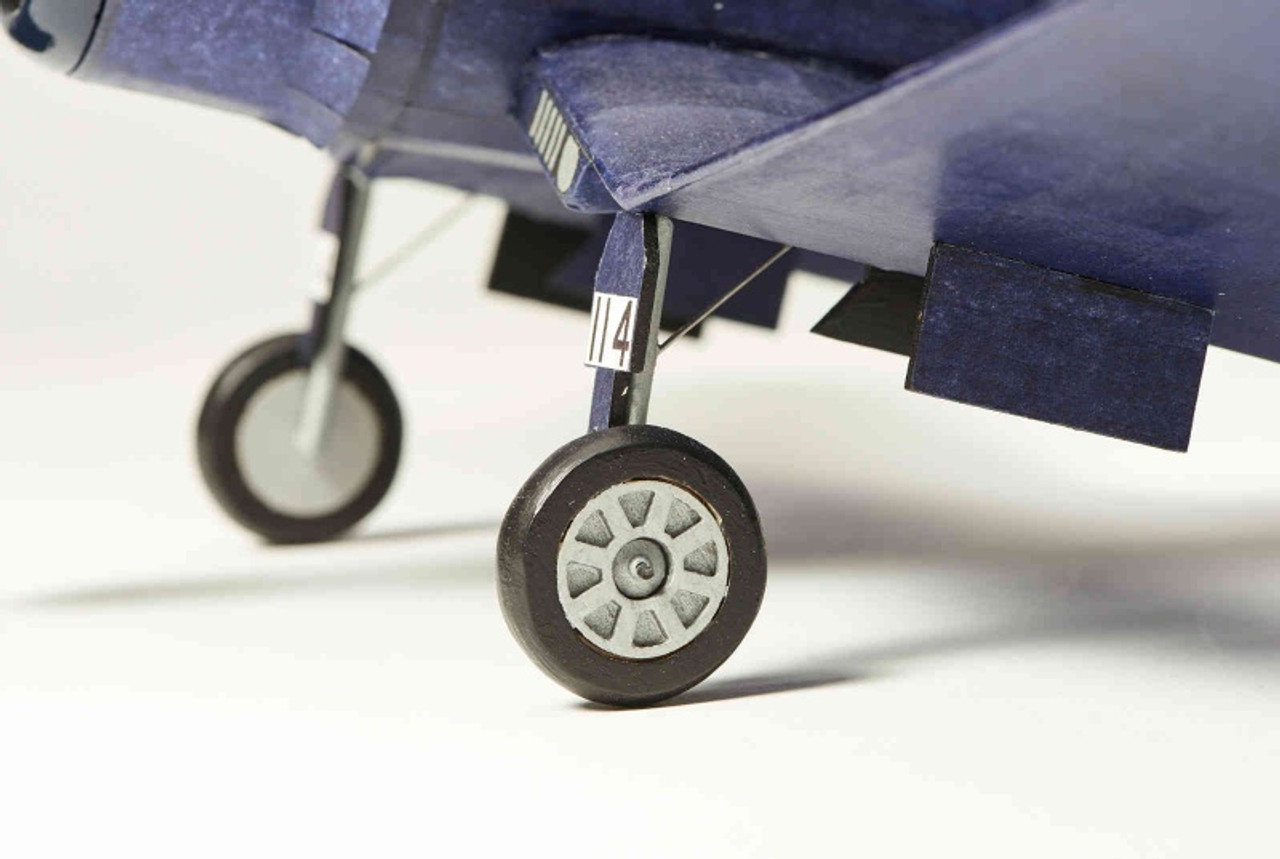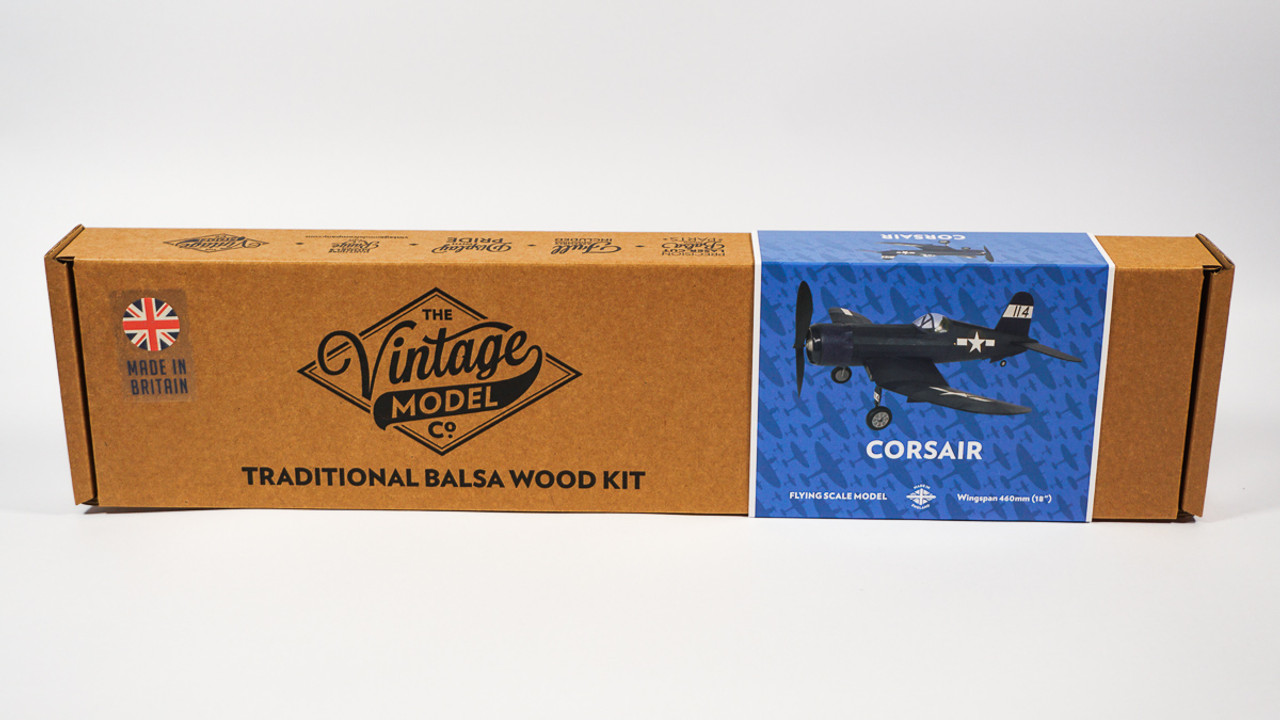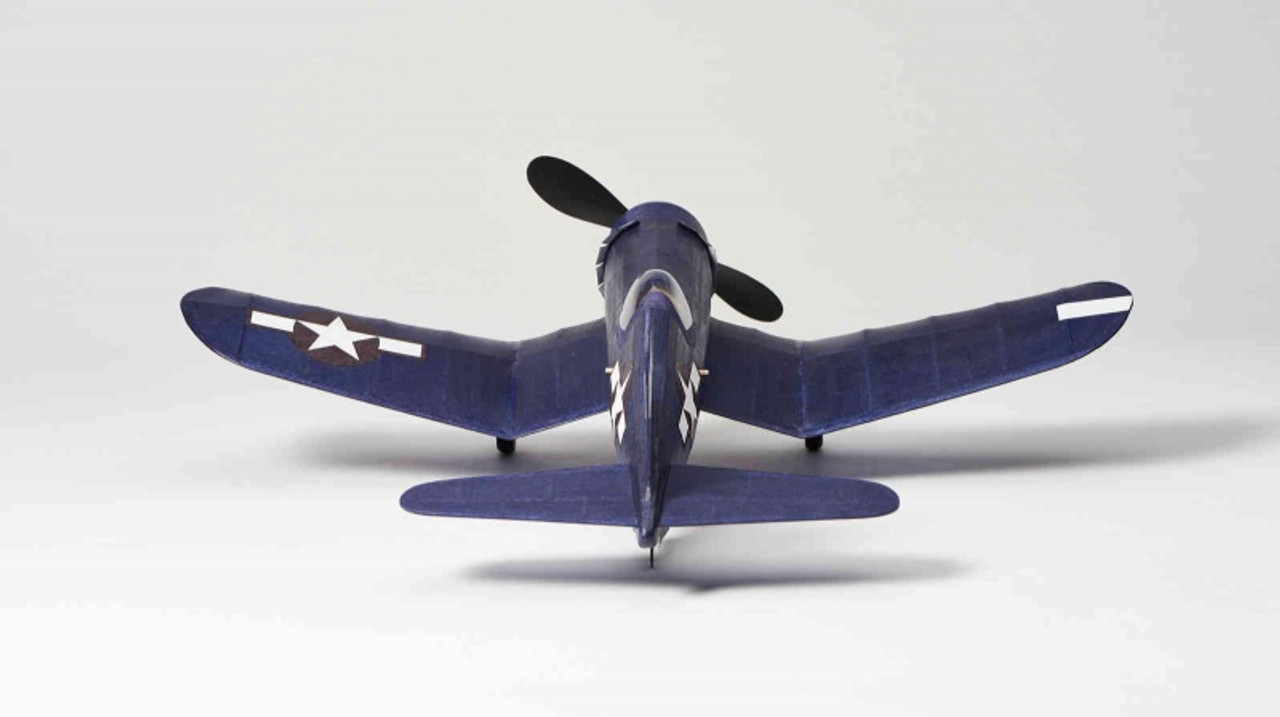Vought F4U Corsair
£34.99
At a Glance
- Power System – Rubber Free Flight
- Wingspan – 18″ (460mm)
- Approximate AUW – 25g
- Difficulty – Beginner
VOUGHT F4U CORSAIR – THE WHISTLING DEATH
In 1938 the U.S. Bureau of Aeronautics issued a specification to manufacturers for a carrier-based fighter bomber. Chance Vought successfully answered this request with a proposal for an aircraft fitted with the biggest, most powerful, air-cooled engine of the day – the hugely powerful Pratt and Whitney 18-cylinder Double Wasp. The engine required a very large diameter propeller to use the 1850 horsepower available, which gave the Vought engineers a headache as it required an equally large clearance to the ground. The simple answer of a tall undercarriage would be unacceptable due to the harsh landing loads expected for a carrier based aircraft. To overcome this problem, the design team lead by Rex Beisel came up with a “bent” inverted gull wing design. The inboard section of the wing having a severe anhedral angle and outboard section a severe dihedral angle with the undercarriage positioned at the joint of the two. As well as being structurally sound the distinctive configuration had the advantage of minimising drag at the wing root to fuselage joint.
The clean lines of the airframe and the powerful engine gave the Corsair a 400mph plus top speed and impressive rates of climb, but the long nose and consequent poor forward visibility when landing, coupled with other difficulties initially made for unsuccessful carrier trials. The U.S. Navy proceeded with the easier to handle Grumman Hellcat, turning over the Corsair to the U.S. Marines. However, the British Fleet Air Arm persisted (probably through necessity as much as any other factor) and by using different landing techniques and modifications, went on to operate the aircraft successfully from carriers.
The U.S. Marines soon made use of the Corsair’s speed, agility, ruggedness and range as they flew it from rough runways on small Pacific islands. It is said that the Japanese named the aircraft the “Whistling Death” because of the deadliness of the aircraft along with the distinctive noise created by the air as it passed through the large wing root mounted oil coolers. Operating well after the Second World War, over 12,500 examples of the Corsair were produced over a 9 year period to 1953, with many serving as recently as the late seventies in some territories.
YOUR KIT
This kit is designed for you to build a traditionally constructed, rubber powered, free flight model of a Corsair operated by VMF-216, a fighter squadron of the U.S. Marines Corps – nicknamed the “Bulldogs”. The Bulldogs were based on the Essex Class aircraft carrier USS Wasp before taking part in the Battle of Iwo Jima in early 1945.
The kit includes the materials (other than paints) to complete the suggested authentic scheme. This is a simple striking scheme, but you can decide to do your own favourite or more complicated scheme if you wish. Construction of the model from this kit uses the traditional method of ‘stick and tissue’, that consists of a built up balsa wood skeleton (framework), covered with a tissue skin. The balsa frameworks are built over a plan that is printed at the exact scale of the model, which is in essence a real engineering drawing. Power is provided by rubber strip motor that is wound up before flight.
Free flight means just that – once the model is launched, it is on its own. It must follow a predetermined flight path established when the model is initially adjusted for flight or ‘trimmed’. This type of traditional building technique and flying requires a degree of patience and skill, but is extremely rewarding. Typically for a small model and in the spirit of the traditional kits, profiles are simplified and adjusted from the original and a relatively large propeller is used. This is done so that the model is light and stable enough to fly on its own, is simple in construction and can work with the rubber motor. These adjustments have been done with care and sensitivity so that the shape and spirit of the original aircraft is preserved as much as possible. Also in the spirit of the traditional kits, additional items required to build the model are things that can be found in the kitchen drawer or are easily available on the high street.
KIT CONTENTS
Four balsa sheets with precise laser cut parts and strip wood.
PVA glue for building the wooden frames.
One 150mm diameter plastic propeller.
One pre-bent motor hook and shaft.
Three low friction plastic nose bushings – one for the propeller and two for the undercarriage wheels.
One vacuum formed canopy.
Piano wire for the main undercarriage and tail wheel legs.
One motor peg (cocktail stick or toothpick). Rubber motor strip.
Tissue to cover the model.
Parts reference sheet (W), full size summary plan sheet (X), scheme diagram sheet (Y) and scheme markings (Z) printed on lightweight paper.
5 in stock (can be backordered)







